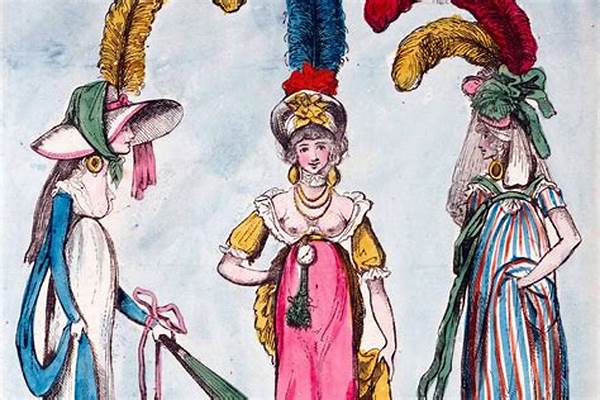Historical romance as a literary genre is a captivating exploration of love stories woven into the fabric of distinct time periods. One of the most compelling aspects of these narratives is the influence of cultural contexts, which shape characters’ motivations, societal expectations, and the intricate tapestry of human relationships. In examining historical romance, it is essential to comprehend how cultural influences interact with, and ultimately affect, the depiction of romance. These insights not only enhance our understanding of the genre but also highlight the intricate relationships between culture and romance over time.
Read Now : Honor And Medieval Chivalry
The Role of Cultural Context in Historical Romance
The impact of cultural influences in historical romance becomes evident when we scrutinize the societal norms and historical settings that shape romantic narratives. Cultural contexts provide a framework within which characters operate, dictating permissible forms of courtship and marriage. For instance, the class distinctions of Regency England, with its strict social mores, have a pronounced effect on the romantic entanglements of its characters. Moreover, cultural influences extend to the depiction of gender roles, influencing the portrayal of both heroines and heroes. The constraints of each time period often result in narratives that both conform to and challenge cultural expectations. As a result, cultural influences in historical romance not only elevate the genre but also prompt readers to reflect on the changing nature of love and relationships throughout history.
Exemplifications of Cultural Influences in Historical Romance
1. Cultural influences in historical romance often reveal society’s hierarchy, through which the class and status of characters significantly affect their romantic fates.
2. Cultural settings in historical romance highlight the evolution of gender roles, allowing readers to witness the transformation of women’s agency across different eras.
3. The influence of cultural taboos in historical romance lends authenticity to the narrative and heightens the tension between protagonists, enhancing the drama of romantic pursuits.
4. Cultural influences in historical romance frequently invoke historical events, situating love stories within the broader context of war, revolution, or political upheaval.
5. Societal norms within historical romances reflect the moral and ethical codes of their respective time periods, offering critical insight into the dynamics of love and marriage.
Interpretation of Cultural Motifs in Historical Romance
Understanding cultural influences in historical romance requires an exploration of the historical and social milieus in which these narratives are rooted. It is within the interplay of cultural mores and individual desire that the nuanced portrayal of love emerges. Authors of historical romance often draw upon cultural symbols and motifs to convey deeper meanings about love’s enduring power and its limitations. Consider, for example, the recurring theme of a forbidden romance across cultural boundaries, a motif resonant with themes of acceptance and the transcendence of societal barriers. The cultural influences in historical romance not only provide texture and depth but also serve as a lens through which readers can examine the transformative power of love. Consequently, these narratives invite a reevaluation of cultural norms, highlighting their impermanence and the possibility of change.
Cultural Symbolism in Historical Romance
1. Cultural influences in historical romance introduce symbolic elements such as clothing, which often signify status, wealth, or rebellion against societal norms.
2. Settings imbued with cultural significance, such as a ballroom or battlefield, reflect both the grandeur and peril of romantic endeavors.
3. Cultural references in historical romances depict language and dialect, which enhance authenticity and provide insight into characters’ backgrounds.
4. Family traditions and rituals serve as both unifying and divisive forces within historical romance narratives.
Read Now : Critically Acclaimed Korean Historical Shows
5. The presence of cultural artifacts, such as letters or heirlooms, often initiates romantic plot developments, linking the past with present emotions.
6. Harvest festivals, religious celebrations, and social gatherings provide arenas for romantic interaction, reflecting cultural values and practices.
7. The concept of honor and duty, deeply tied to cultural influences, frequently forces characters to navigate complex moral dilemmas in pursuit of love.
8. Folk tales and myths interwoven into romances emphasize the timeless nature of love and its cultural expression.
9. Art and literature within the stories reflect historical periods’ shifting attitudes toward love, illustrating cultural influences over time.
10. Cuisine and culinary traditions offer a sensory exploration of cultural influences, creating intimate romantic moments.
Societal Impact on Romantic Narratives
The extensive cultural influences in historical romance underscore the genre’s intricate relationship with societal values and historical contexts. These narratives provide a prism through which the reader can understand the social constraints and liberties that define love and marriage. Historical romances often illuminate the struggles faced by characters as they seek fulfillment within, or in defiance of, prescribed cultural roles. By delving into themes such as duty, honor, and personal agency, these romances underscore the timeless conflicts between societal expectations and individual desires. Consequently, cultural influences in historical romance offer not only entertainment but also critical commentary on the mutable nature of love within a constantly evolving cultural setting.
Conclusion: The Enduring Allure of Cultural Contexts in Historical Romance
In summary, cultural influences in historical romance play a crucial role in shaping the genre’s narratives by embedding romantic tales within specific historical and social frameworks. These influences dictate the norms and traditions that characters must navigate, thus providing a foundation for exploring love’s multifaceted nature. By continually balancing individual passions against the constraints of their cultural environments, historical romances captivate audiences with their portrayal of resilience and longing. The genre not only entertains but also encourages reflection on how historical and cultural contexts continue to shape human relationships. Ultimately, cultural influences in historical romance offer a lens through which one can appreciate both the limitations imposed by society and the power of love to transcend them, highlighting the genre’s enduring appeal.
